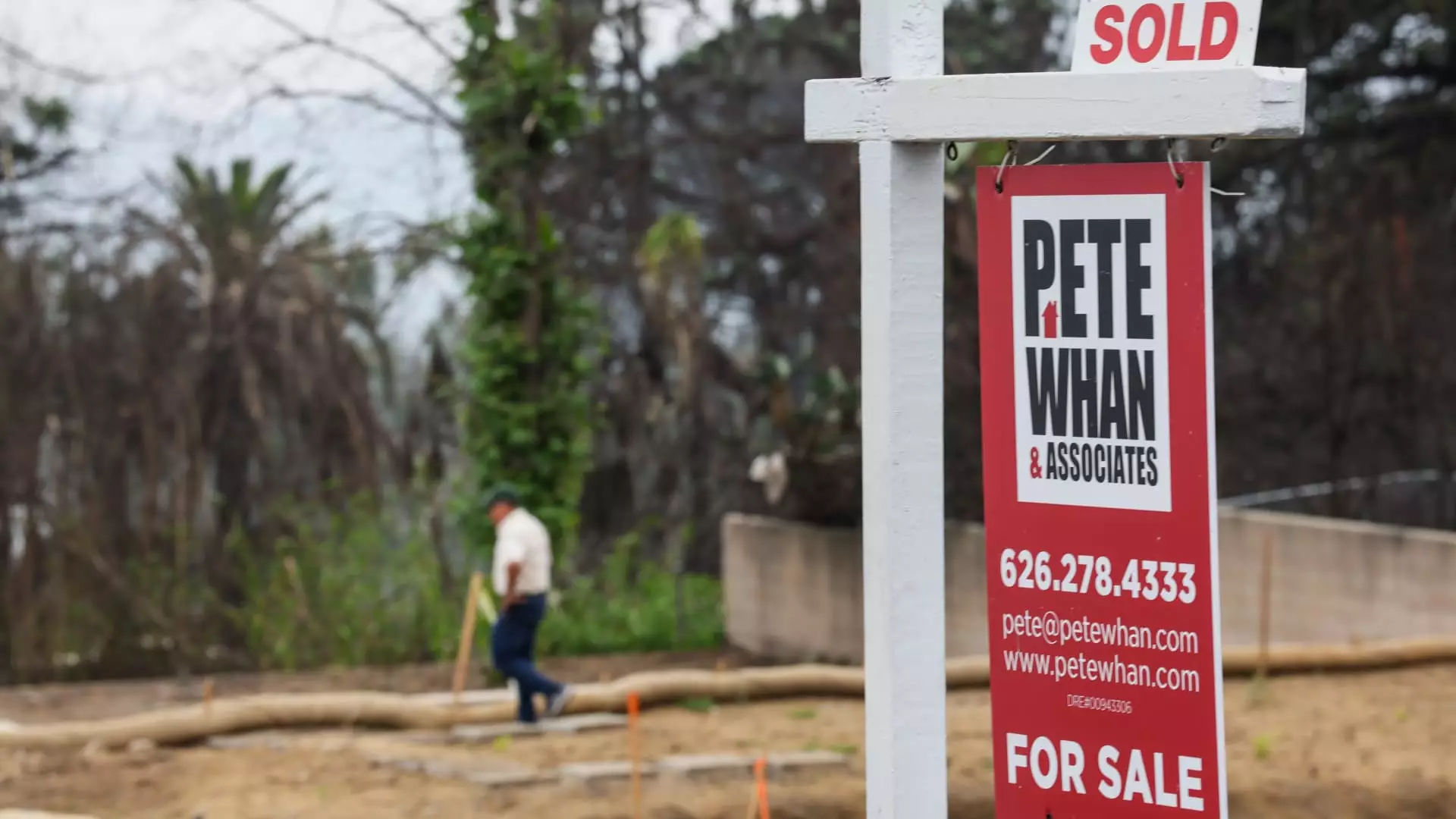Recent shifts in the financial landscape reveal an unsettling reality: the housing market is increasingly vulnerable to external economic pressures. The surge in Treasury yields, driven by renewed fears about tariffs and their broad implications, signals a weakening of confidence in steady economic growth. Consequently, mortgage rates are climbing, placing significant barriers between prospective homeowners and the dream of owning a home. This is not a benign adjustment; it is a warning sign of deeper systemic issues threatening the accessibility and stability of homeownership for middle-class families. When borrowing costs rise, the ripple effects are felt across the housing sector—squelching demand, lowering prices, and discouraging sellers from entering a market that feels increasingly unstable.
The Decline in Mortgage Applications: A Telltale Sign of Waning Consumer Confidence
The most immediate indicator of this turbulence is the sharp 10% drop in mortgage application volume last week. This decline encapsulates a broader story: rising interest rates make borrowing more expensive, discouraging many potential homebuyers from taking the plunge. October’s figures reveal that applications for home purchases plummeted by 12%, the slowest pace since May, signaling a potential cooling-off period that could evolve into a more sustained downturn. Even with a year-over-year increase, the current activity level suggests a market increasingly hesitant under the weight of economic uncertainties. As home prices soften and inventory incrementally grows, the risk is that a cycle of stagnation could entrench itself, making affordability a distant dream rather than an attainable goal.
The Challenges of Refinancing and Market Resilience
Refinancing—a lifeline for many existing homeowners looking to reduce costs—also faces significant headwinds. Application volumes have dropped 7% this past week, with refinances to VA loans experiencing a pronounced 22% decline. This is emblematic of a broader shift: higher rates reduce refinancing opportunities, particularly hurting those most vulnerable to economic shocks. Yet the real concern lies in the possibility that this tightening could deepen, constraining homeowners’ ability to adapt to changing economic circumstances and eroding the resilience of individual finances. Despite inflation figures slightly exceeding expectations, mortgage lenders remain cautious, with rates continuing to climb. This suggests that the market’s recovery path is murky, hampered by lingering fears about tariffs’ destabilizing effects and the uncertain trajectory of inflation.
Analyzing the Broader Implications for Society
From a center-left perspective, these developments highlight an urgent need to rethink economic policy. The rising mortgage costs are not just market reactions; they are barriers to economic mobility for the middle class, threatening to widen disparities and entrench economic inequality. When access to housing is constrained, it perpetuates social stratification, making it harder for budding families to build intergenerational wealth. Policymakers have a responsibility to stabilize these markets—not by unchecked interventions, but through measures that foster transparency, protect homeowners, and promote equitable growth. As the economy adjusts to these mounting pressures, a thoughtful, balanced approach is essential to ensure that the pursuit of economic stability does not come at the expense of fundamental rights to safe, affordable housing.

